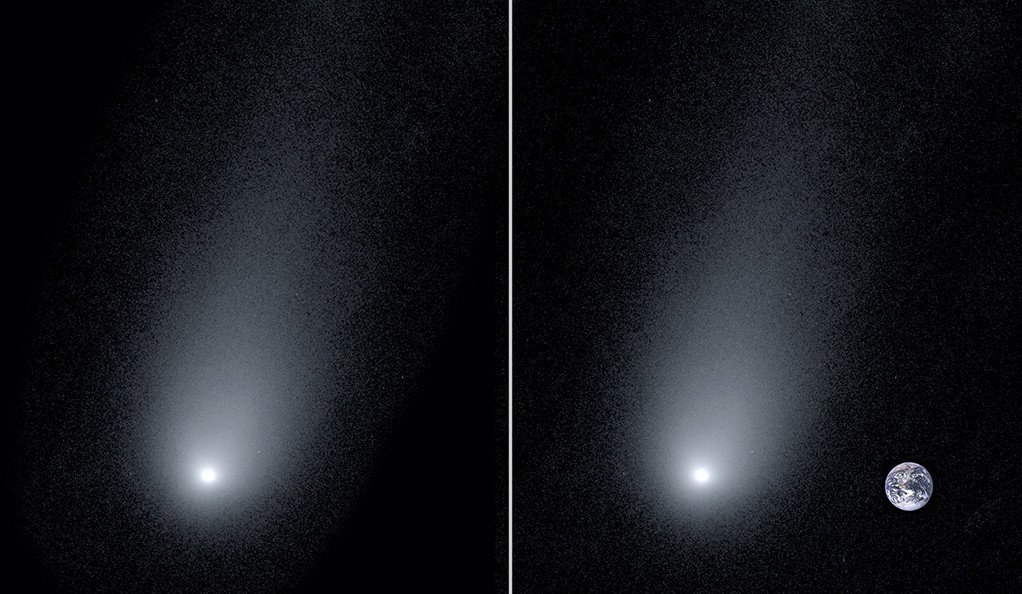Astronomers and space enthusiasts are abuzz in 2025 with the arrival of a new visitor from beyond our solar system Comet 3I/ATLAS, the third confirmed interstellar comet ever detected. Its unprecedented approach, odd acceleration, and striking color changes have ignited international interest, raising fundamental questions about the origins and evolution of celestial bodies that journey between stars.
This blog takes you deep inside the latest findings from telescopes, solar probes, and scientific teams as they unlock the secrets of the Comet 3I/ATLAS interstellar discovery. We explore the comet’s complex behavior, the physics behind its mysterious acceleration and color shift, and what its close encounter with our sun means for astronomy in 2025 and the decades ahead.
Brief History: Interstellar Comets and Why 3I/ATLAS Matters
Interstellar comets are rare, enigmatic travelers, originating in faraway star systems and venturing into our solar neighborhood after eons in the emptiness of space. The record began in 2017 with 1I/`Oumuamua and continued with 2I/Borisov in 2019 each providing glimpses of material and physics beyond the reach of Earth-made probes.
Comet 3I/ATLAS, discovered by the ATLAS survey in early 2025, is the latest and potentially most revealing addition. Unlike its predecessors, 3I/ATLAS arrived with a pronounced tail, intense color variations, and a trajectory suggesting complex interactions with solar winds and planetary gravity well before its official ‘solar flyby’.
The Discovery: How 3I/ATLAS Became a Sensation
ATLAS (Asteroid Terrestrial-impact Last Alert System), a network of ground-based telescopes, first spotted 3I/ATLAS during its inbound journey toward the sun in February 2025. Unlike native solar system comets, its hyperbolic orbit meaning it was on a one-time, non-return course strongly flagged its interstellar origin.
Key detection milestones:
- Spectral signature: Initial analysis found elements and molecules rarely seen in local comets, including unfamiliar ratios of cyanogen, carbon monoxide, and magnesium.
- Velocity: It moved at over 40 km/sec much faster than solar system objects.
- Light curve: A rapidly brightening and color-shifting coma (cloud) garnered fast global follow-up.
Mysterious Acceleration: What’s Driving 3I/ATLAS’s Odd Speed?
While all comets accelerate toward the sun due to gravity, 3I/ATLAS surprised scientists with an additional non-gravitational acceleration. This means its speed increased in ways not predicted by gravitational calculations alone.
Possible explanations include:
- Outgassing jets: As the comet’s ices vaporize, jets of gas and dust may push the comet and alter its path. Observations with NASA’s Hubble and ESA’s Solar Orbiter detected powerful outflows, especially of CO and cyanogen.
- Solar wind effects: High-energy particles from the sun interacted intensely with the comet’s surface, propelling small fragments and leading to disintegration or ‘spin alterations’.
- Material structure: 3I/ATLAS seemed to have unusually porous and fragile material, making it more prone to breakup and irregular motion than ‘tougher’ solar system comets.
- Unknown forces: Researchers have not ruled out exotic possibilities, from rare chemical processes to electromagnetic influences unique to interstellar objects.
Such findings may reshape models of how comets behave when moving from deep space into active stellar environments.
Color Shift: A Tale Written in Light
Perhaps the most beautiful aspect of 3I/ATLAS’s journey was its dynamic coma colors. Its head and tail shifted from bluish-green to fiery gold as it drew near to the sun a transformation linked to the composition and behavior of the comet’s ices and dust.
- Blue-green hues: Distant from the sun, ionized cyanogen and carbon monoxide dominated, glowing via fluorescence in solar UV light.
- Yellow-gold shift: As heating intensified, silicate and magnesium-rich dust boiled off, altering the reflection and emission spectra. Rampant fragmentation increased surface area and released fresh minerals.
This ‘color evolution’ is not just a spectacle it offers clues to how planet-forming material changes across stellar environments, and how exoplanetary systems may be seeded with cometary debris.
The Solar Flyby: A Historic Close Encounter
In June 2025, 3I/ATLAS made its perihelion flyby, coming within 0.8 AU of the sun (about 120 million kilometers). This event provided:
- Unmatched science: Instruments aboard Parker Solar Probe and Solar Orbiter captured real-time data on its gas emissions, plasma interactions, and gradual fragmentation.
- Unexpected phenomena: Part of the comet’s nucleus appeared to break up entirely; faint debris trails were detected, potentially impacting Earth’s atmosphere as fresh micrometeorites.
- Spectacular imaging: Solar observatories and amateur astronomers shared dazzling images of the evolving tail and corona, inspiring global interest.
Scientific Impact and Broader Implications
The Comet 3I/ATLAS interstellar discovery gave astronomers a rare opportunity to:
- Study primordial matter from outside the solar system, possibly billions of years old.
- Test theories about comet disintegration, tail formation, and interstellar chemistry.
- Refine models of solar wind-comet interactions, vital for future deep space exploration.
It also raised new questions:
- How many more interstellar comets remain undetected?
- Did 3I/ATLAS carry complex organic molecules or prebiotic compounds?
- What insights can these visitors offer about stellar formation, galactic migration, and life’s cosmic journey?
Looking Ahead: Astronomy’s Next Frontier
As 3I/ATLAS exits the solar system its mystery only partly unveiled astronomers herald this epoch as the beginning of “interstellar comet science.” With improved technology, global collaboration, and next-gen observatories, future discoveries may follow in its dazzling wake.
Conclusion: Cosmic Messengers and the Spirit of Exploration
Interstellar Comet 3I/ATLAS brought the universe a step closer, challenging old models and connecting Earthly observers to the drama unfolding in deepest space. Its acceleration, color shifts, and spectacular solar flyby symbolize the promise and curiosity at the heart of modern astronomy a quest not just for knowledge, but for wonder.
The journey of 3I/ATLAS is a reminder: every unknown visitor holds the potential for new discovery, and in pursuing their secrets, humanity deepens both its science and its sense of belonging to the cosmos.


